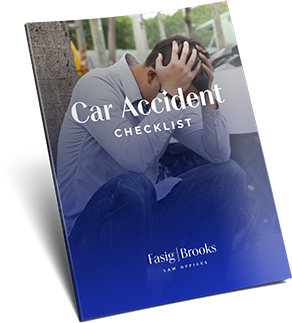When faced with a civil legal matter, there are a few instances when it isn’t necessary to have an attorney represent you. For cases worth $5,000 or less, a Small Claims action may be the best route to take. While you can hire an attorney to represent you, Small Claims Court institutes a process designed to help recover damages from another person without the need for an attorney.
In car crash cases, I often recommend this route when the person involved in the accident has no injuries, has less than $5,000 worth of damage to their vehicle, or (1) the insurance company for the person that caused the crash is denying payment for repairs to the vehicle or (2) the other driver doesn’t have insurance through which to make a claim.
The small claims process is relatively user friendly and is something you can handle pursuing on your own. (See the links below that describe the typical processes and procedures.) The employees at the clerk of courts office can also walk you through the initial steps.
The first step is to go to clerk of courts office and file a Statement of Claim. Filing the claim in a property damage action should be done in the county where the at-fault party resides or in the county where the crash took place. You will most likely have to pay a filing fee in which the total amount will depend on the county where you are filing the claim and the amount of damages you are seeking. Even if it is the insurance company that is denying you, you would still list the name of the at-fault driver as the other party and not their insurance company.
Next, you will have to inform the at fault party that you are filing a claim against them. You do this by sending a Summons/Notice to Appear. The initial court date and time will be scheduled when you file the claim. You will have to send this Summons to the other party via certified mail to assure the adverse party receives it. If the other party receives the Summons and doesn’t appear before the court at the agreed upon time, the court may issue what’s called a default judgment against them. Because the other party fails to appear, the judge will look at the evidence you have and award a verdict in your favor.
After the party has received the summons, you and the other party will have a Pretrial Conference with the judge. However, this is not a trial. While the judge may ask a few questions about the nature of the claim, she is not likely to make a formal decision at this point. It is more of a procedural meeting to get everything in order and select a trial date. The judge may also suggest you participate in mediation, where you and the other party will meet before the trial with an independent mediator to discuss the issues. This can help you determine if you can resolve your issues without a trial.
Finally, you may make it all the way to the Small Claims Court for trial. Don’t worry- this is not a formal trial like you see on TV! Small claims judges are used to working with parties that are not represented by attorneys. You can introduce evidence which illustrates how much the costs of damages are by bringing in repair estimates. You can even call witnesses, either in person or by phone, to provide testimony as to how the crash occurred. At the end of the case the presiding judge will make a final ruling and issue an order to that effect.
While this process is designed for persons without attorney representation, you may still have questions about the process. Feel free to give me a call and I will be happy to help you determine if Small Claims Court is right for you.
Page 26: Summons/Notice to Appear
Page 31: A copy of the Statement of Claim Form for Car CrashesOverview of the Small Claims Process:



